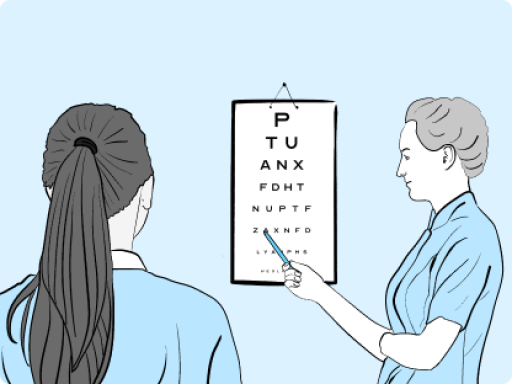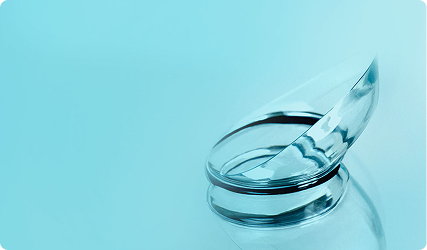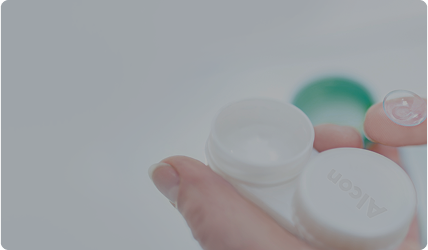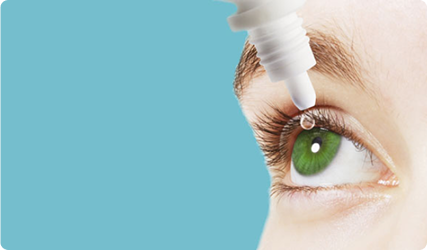Contact Lenses and Care
Are Contact Lenses Safe?1
6 mins read
Yes! Contact lenses are generally safe. So here’s some more information which you should find reassuring. Every form of modern contact lens lets oxygen pass through. This means the old days of eyes swelling and suffocating behind hard lenses are largely that: a thing of the past. Advanced polymers made of hydrogels and silicone-hydrogels – plus the science behind rigid gas permeable lenses—make all lenses generally safe, in principle.
That’s good to know, right? Well yes, but what works in principle doesn’t always work in reality. So, what do you need to be aware of?
The vast majority of people never experience any serious issues with their contact lenses, but a small group may get temporarily red, irritated or dry eyes. Only a very few individuals develop eye infections – or in very rare cases, serious conditions. In each case, the chances of this happening reduce dramatically if you do three things. The first is to stick to the indicated replacement period. For daily disposables that’s a single day’s wear, with the lovely benefit of not having to care for them overnight.
As the name suggests, monthly replacement lenses have to be replaced after 30 days, regardless of how often you have used them during that month. With these monthly replacement contact lenses, your second job is to keep them clean and disinfected, whilst taking care of the case.
The third necessity is to book an appointment with your optician immediately, if a problem occurs. Follow this simple guidance and you’ll avoid or resolve almost any issues, leaving you free to enjoy a happy future with your contact lenses.
But hold on a minute. We’ve said what to do, but how do you do it? Here’s what you need to know…
Let’s take contact lens care first. It’s the key to eye health. Every time you handle your contact lenses, your hands need to be squeaky clean. This means washed in a fragrance-free soap, rinsed, then dried on a (preferably lint-free) towel.
Check your fingertips for dust, debris, hairs and fibers before handling your contact lenses. Make sure the lens is a perfect bowl shape, not inside out with pointed edges. If the contact lens looks damaged in any way, it’s no longer a friend of yours. Keep it well away from your precious eyes.
If you wear daily disposable contact lenses, change to a new pair any time your eyes feel irritated. Stop wearing them if the new pair fails to improve things—and see your optician.
If this happens with monthlies (the sort of contact lenses you take out daily but use for a month), give your eyes a break. Clean and disinfect the lenses, store them in their overnight case, and then wait until your eyes feel fresh and ready for their next adventure. Clean the stored lens with your recommended contact lens solution, check it for damage and rinse your eyes with artificial tears or contact lens rewetting drops if they still feel a bit dry. This should help prevent potential problems.
However, everyone’s eyes are unique and respond differently to change. Some people are more susceptible to infections, while others are prone to dry eyes. So it is important to ask your optician to examine your eyes whenever your eyes remain uncomfortable for more than a day or so. Don’t delay your visit. A rapid response can stop the condition worsening, ensuring your eyes return to full health quickly and safely.
Whether you wear glasses or contact lenses, seek advice immediately if your vision becomes blurred; your eyes become red, painful or swollen; or if you get visible spots over your iris (the colored part of your eye).

Even if your eyes become dry or just mildly irritated during contact lens use, go back to glasses until you have had your eyes rechecked.
You may need a few days off from your contact lenses before restarting, a change to a different type of contact lens, or to try an alternative form of vision correction. Don’t buy any contact lenses (online or elsewhere) until you’re sure which ones work best for your eyes. Only your optician can determine this, when checking your eyes and fitting your contact lenses, ensuring you get a safe, accurate and personalised prescription.
It’s also important to attend regular check-ups (at least once a year), even when everything seems to be progressing smoothly. You do it for your car, so surely your eyes deserve equal (or greater) care.
Never exceed the recommended period for which your specific contact lenses can be worn. Yes, it’s tempting to do so. We get it. It’s really easy to think you can get away with overdoing things, but remember, this is your eyesight at stake. Don’t gamble! Ignoring the rules may seem like a good idea at the time, but it’s one of the best ways of turning a safe contact lens into a damaging one.
Unless you’ve been prescribed extended-wear contact lenses, please don’t sleep in them! Most contact lenses are not designed for overnight wear and you could damage your eyes by doing so. Sleeping with your contact lenses in raises the risk of corneal infection at least fourfold, whatever type of lens you wear.2
It’s also best not to wear contact lenses in a swimming pool or shower. Why? Well, it’s not so much that there’s a small chance they could be dislodged, but more to do with nasty, invisible bacteria and bugs. Hidden in water, these bacteria and bugs could transfer to your contact lens and into your eyes. That’s also why you should never use tap water to lubricate or clean a lens. It’s loaded with germs and microbes you really don’t want anywhere near your eyes.

As for saliva, well, that’s a definite no. The microbe-filled contents of our mouths do not make for a good cleaning solution. Avoid letting your lenses come into contact with saliva at all costs.
Ah, but what happens when you drop a lens? If it’s a daily disposable contact lens, throw it away and use another one. If it’s a monthly replacement contact lens, disinfect the contact lens in a multi-purpose contact lens solution prior to reinserting the contact lens. Change the cleaning solution daily and keep your contact lens case clean, using fresh supplies of solution, not tap water. It’s smart to replace the case every couple of months (many care products provide a new case with every bottle, it makes sense to use it!). No matter what lens cleaning solution you use, ALWAYS follow the instructions on the box or bottle for proper cleaning, disinfecting and storing of your contact lenses.
Finally, only wear contact lenses prescribed for you, and overseen by your optician.
The vast majority of lens problems and infections arise from not following basic, simple rules – not from the products themselves.
So do the right things and you can be (almost!) certain to enjoy worry-free, safe vision.
REFERENCES
1. About Contact Lenses.CDC. Website. https://www.cdc.gov/contact-lenses/about/index.html. Updated May 27, 2025. Accessed September 2025.
2. Dart JK, Radford CF, Minassian D, Verma S, Stapleton F. Risk factors for microbial keratitis with contemporary contact lenses: a case-control study. Ophthalmology. 2008;115(10):1647-1654.e16543.
For contact lenses and contact lens care: Consult your eye care professional for wear, care, precautions, warnings, contraindications and adverse effects.


DAILY CONTACT LENSES
Daily disposable contact lenses are one day single-use lenses. No lens care is needed, making daily disposable contact lenses especially convenient if you’re always on the go.


MONTHLY CONTACT LENSES
Monthly replacement contact lenses are reusable contact lenses. After a month, you throw them away and replace them with a fresh new pair.


EYE CARE PRODUCTS
From dry eyes, to eye allergies, and optimal eye health— find solutions you need to keep your eyes feeling their best.
ALWAYS READ THE LABEL AND FOLLOW THE DIRECTIONS FOR USE.
All content on this website is for informational purposes only, always talk to your health professional regarding your eye health or medical conditions.